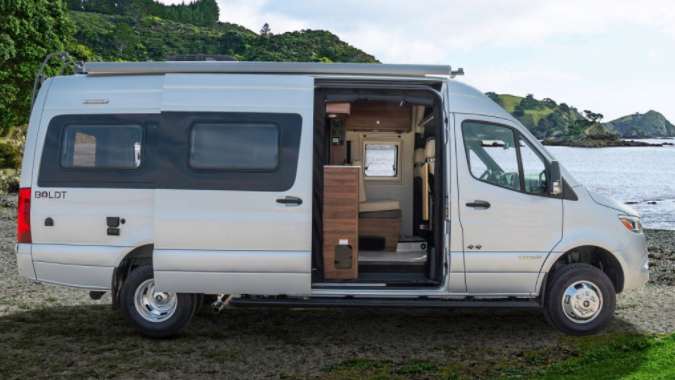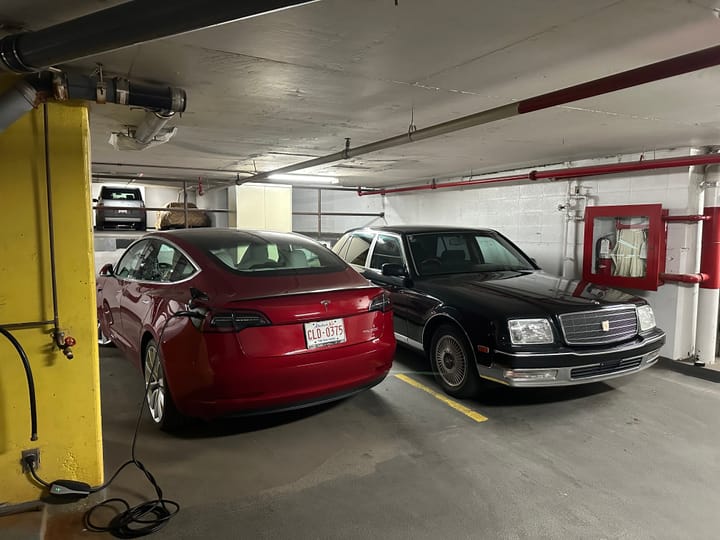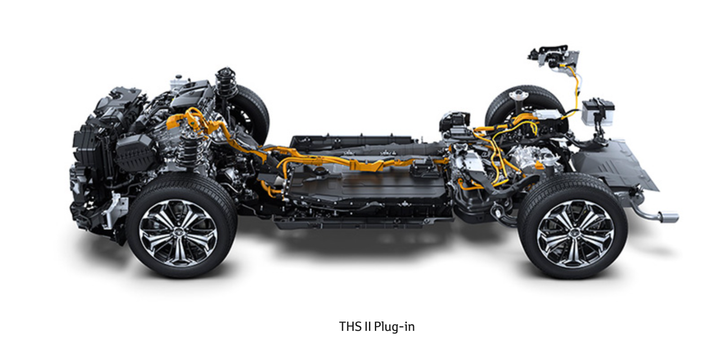EV to RV: Technology Transfer

The massive investment in e-Mobility is providing useful technology that is now being adopted by the RV industry - principally the adoption of large capacity Lithium Ion battery packs which have a host of benefits for camping and long distance travel.
The typical RV is set up with dual systems for both ‘shore power’ i.e. being plugged into the electrical grid, and for ‘boondocking’ which is the term for camping off-the-grid. This makes for a complex maze of mechanical systems that require constant maintenance and are fussy to operate. Propane systems can be hazardous if not used and maintained properly.
RVs have propane systems and both AC and DC electrical systems. Typically the furnace, stove and hot water heater use propane burners with electrically powered controls. The fridge is usually dual power, with the compressor running on either propane or electricity, although the controls always need electrical power. The air conditioning unit runs on electricity, but needs a lot of it, and typically will only run if the RV is plugged into a 30 Amp 240V shore service. The water pump, ventilation fans and audio visual components run on DC power from the RV-Marine batteries that are usually housed in a box at the front of the trailer next to the propane cylinders. The batteries are charged by the tow vehicle's alternator or by a AC/DC inverter/charger when the RV is plugged in.
Getting everything to work properly can be a challenge, even when new. RV dealers can be so busy with warranty work on late model RVs that they refuse to service older models or can only do so in the ‘off’ season. It is hard to find an owner of a late model RV that hasn’t had numerous problems with it - usually discovered when on vacation. As the RVs age and start to shake themselves apart, things get worse, and owners can often spend as much or more time servicing their RVs as using them.
If the batteries die, nothing will work - even the propane appliances need electrical power to operate. Most RVs can only survive for 2 or 3 days without the use of an external source of electricity. This can be provided by a gasoline powered generator, but even the best 4-stroke generators are noisy and not allowed in many locations, or if so restricted in use. If the tow vehicle is diesel powered, you may need three types of liquid fuel: diesel, gasoline and propane!
A large Li-Ion battery pack, as found in a typical PHEV, can eliminate the need for propane and a gas generator, and extend the ‘off-the-grid’ capability of an RV.
A typical RV might have twin 100 Amp Hour batteries. Converting to kWh gives about 1.2 kWh each, or 2.4kWh in total electrical storage. A typical battery pack from a PHEV has between 10 - 20 kWh - more than 4x the electrical storage.
By far the largest power consumer in an RV is the Air Conditioning. A typical RV AC unit is rated for 15,000 BTU, and uses 1.5kW to run. This would give you little more than one hour of comfort with a typical twin battery set up - not a practical solution.
With a large battery pack propane can be eliminated. The fridge, stove, furnace and hot water heater can be purely electrically powered. Because you are not combusting anything in the RV, you don’t have to worry about carbon monoxide poisoning or a gas explosion. You don’t have to stop and fill propane bottles. Electrical appliances are more reliable and require less maintenance than gas powered ones.
The large RV battery pack installations usually come with a secondary large alternator for the camper which provide up to 6kW, meaning it would take 2 hours to fully charge a 12kWh battery pack from 0. Also, solar panels are added to the system and can replenish around 2kWh per day in good conditions. The solar power can also keep the 12V chassis battery topped up.
Practically speaking, what are the advantages of a large battery pack for typical RV use?
- You can leave the gasoline generator and jerry can behind.
- Off-the-grid camping can be extended from 2/3 days to a week or more.
- Air conditioning can be used at unserviced camp sites or camp sites where generators are banned.
- The fridge can be left on safely while travelling (you are supposed to turn off the propane when mobile).
- Tonge weight on the trailer can be reduced with the elimination of propane canisters and battery box.
- Elimination of propane and gas for the generator provides less fuss and maintenance. Importantly, no harmful combustion by-products or risk of gas explosions.
These are all very significant advantages that I would be eager to adopt. The only negative that I can see is the cost which could be upward of $20,000 - most of which being cost of the battery pack itself. Also, care would need to be taken so as to not let the battery charge deplete completely which could ‘brick’ it. This could require some planning as the battery would be impractical to remove from the RV, and the vehicle would likely stored outside, possibly for long stretches of time. Ideally you would have indoor parking for the unit and leave it plugged in over the winter.
While we still rely on combusting fossil fuels to make a lot of the electricity we use, I would rather do this in a power plant than in a camper van that my kids are sleeping in!
2022 WINNEBAGO BOLDT 70 BL (15,00okm)


Lawrence Romanosky is a 'Car Guy' operating an automotive restoration, maintenance and brokerage business in Calgary, Canada. He publishes weekly articles on a wide variety of automotive topics, usually uploaded early Saturday afternoons. He can be reached at Lromanosky@me.com, 403-607-8625.



Comments ()